Educators implement effective planning, instruction, assessment and reporting practices to create respectful, inclusive environments for student learning and development.
Humanities 8 – A Lesson in Short Story Plot Development (December 2019)

Something that I am always striving to do, particularly in English Language Arts, is to grow my arsenal of hands-on activities. It is definitely a challenge at times to do so, and feels risky when you are trying out an activity for the first time, but the ultimate reward is when you see how engaged your students are. English Language Arts is so much more than just reading and writing, and hands-on lessons can ultimately create a space for our students to appreciate this as well.
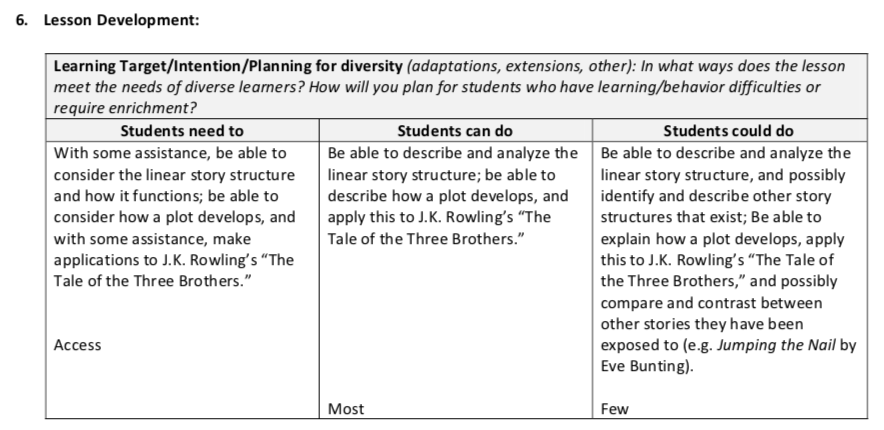
This was a lesson that I recently taught on plot development. We were in the middle of a Short Stories unit, and in this lesson, we were studying “The Tale of the Three Brothers,” by J.K. Rowling. Before the activity, I taught the students an introduction to the linear plot structure. This structure involves a plot that moves forward chronologically, and one where a problem is presented, steps are taken to solve the problem, and then the problem is solved. We examined the plot mountain structure as a framework for this concept.
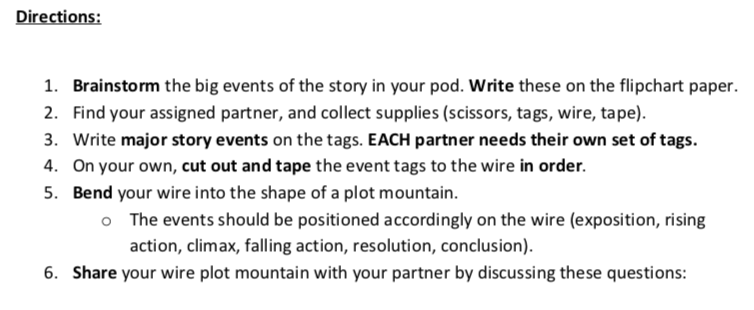
We then transitioned to the activity. Students were instructed in the above directions, and I gave them task and time warnings incrementally. They first worked in pods, and then in assigned partnerships. Their task, ultimately, was to create a plot mountain for “The Tale of the Three Brothers,” using a piece of wire. They had to make story event tags on paper, and tape them to the wire, deciding where on the plot mountain the event “fit.”

Students then had to have a discussion with their partner, answering the above questions. I circulated, ensuring that students were discussing, and prompted students who were having trouble answering the questions for themselves.

Throughout the whole activity, the students were engaged in creating their plot mountains. They had thoughtful discussions on why certain events went where on the mountain, and were able to easily change the shape or switch the position of the events on the wire if they changed their minds.
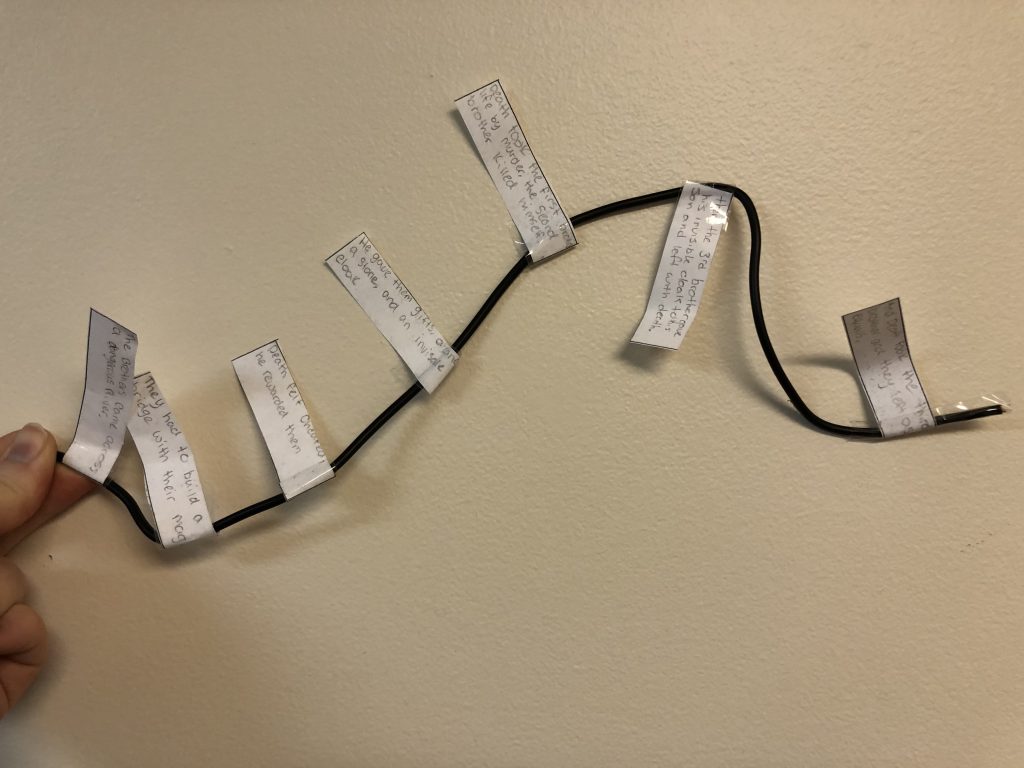
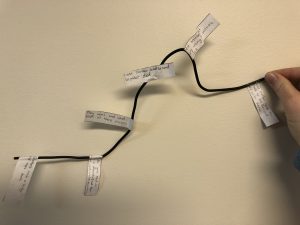
Something we discussed at the end of the activity, if students had a different placement of events on their mountain, was whether they could explain and justify why they had placed that event where they did. We also returned to the linear plot structure framework of a problem being presented and then solved. Some students changed their minds about the placement after this reiteration.
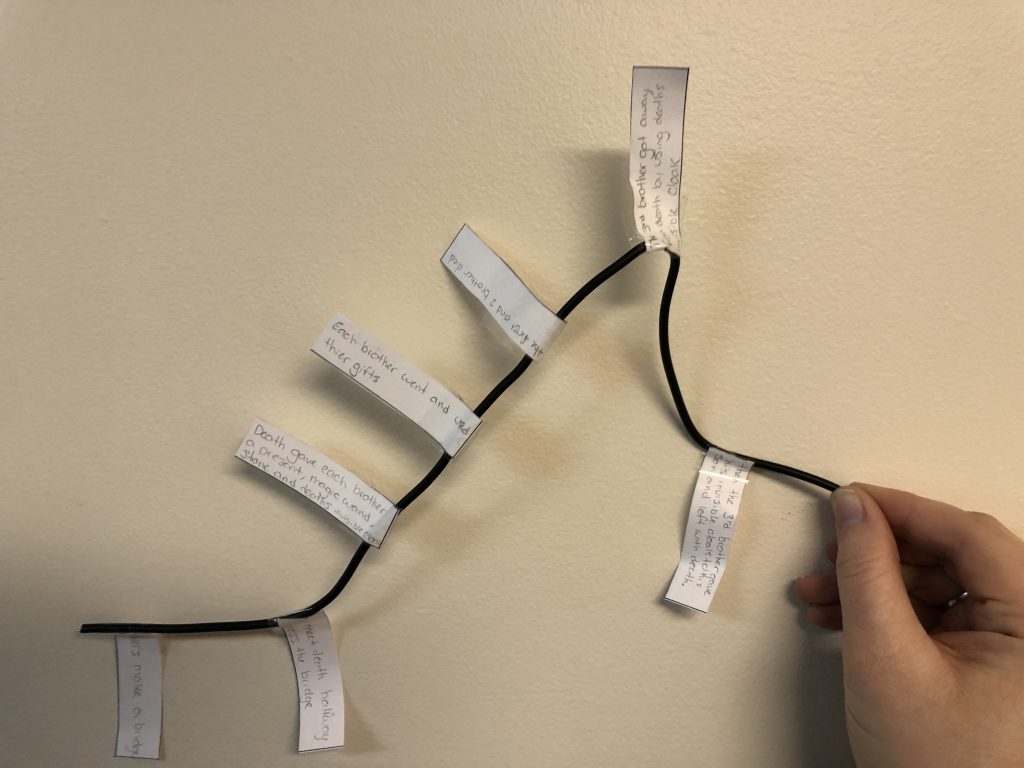
At the end of the period, I collected each of the students’ plot mountains for formative assessment. When I read them over at home, I was pleased to see that the majority of my students had put made informed decisions about the placement of events on the mountain. The students unanimously displayed the activating circumstance on the plot mountain (the first bend), as well as the climax of the story (the top of the mountain).
This was a fun and interactive activity that I will be using with future classes when teaching plot development.
English 8 – A Lesson in Descriptive Writing (February 2019)
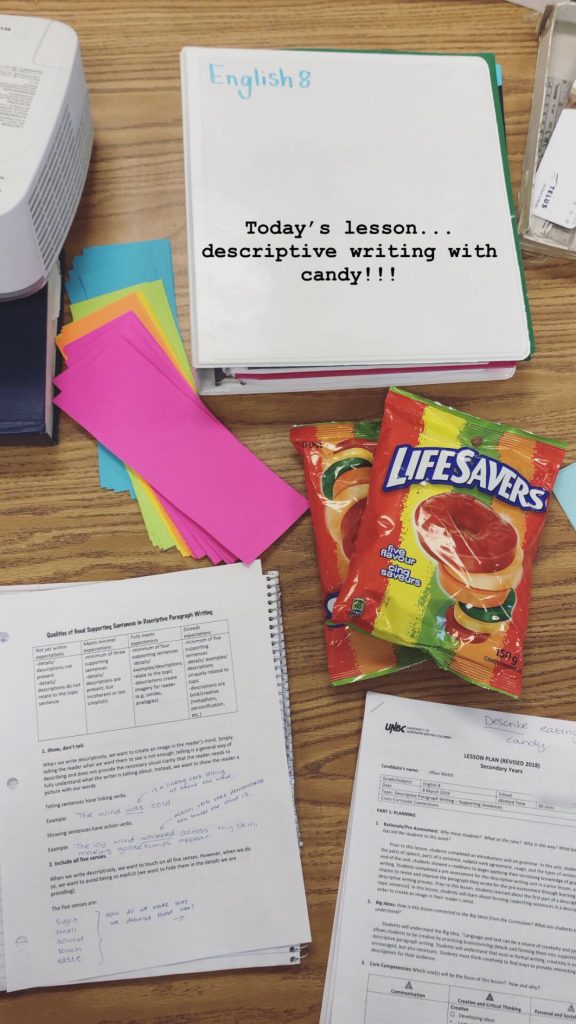
This was a fun lesson on descriptive writing that I did with my English 8 class in my first practicum. The aim of the lesson was to improve students’ use of supporting sentences in their paragraphs. They also learned about using the “five senses” (sight, sound, smell, taste, and touch) in their descriptive writing. For the activity, they had to create a mind map that described their candy.

They were encouraged to be creative with their descriptions, to use a thesaurus to find less generic language, and to “show” rather than “tell” (e.g. say: “The lifesaver has a slightly sour cherry flavour,” rather than: “The lifesaver tastes like a sour cherry”).
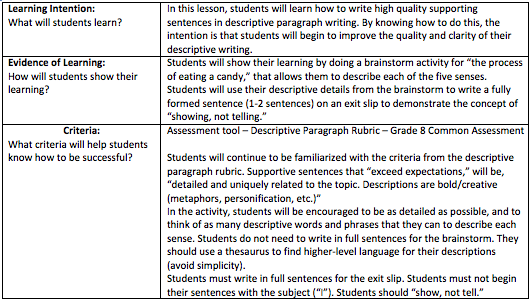
I enjoyed watching the students come up with their descriptions of the candy. Many of them started with simple language and with the use of the thesaurus, employed higher-order language. Moreover, the students were motivated and engaged throughout the entire lesson. I was also formally observed on this lesson, and the feedback I received from both students and my practicum mentor was overall positive.
This activity went well; however, in the future, I would likely give the students a larger paper to brainstorm on, so that they are encouraged to write more, and after they complete their descriptive sentence, I would have them peer assess each other. This would give students a chance to practice giving and receiving feedback, and also allow for more revision of their sentences before they hand them in.
